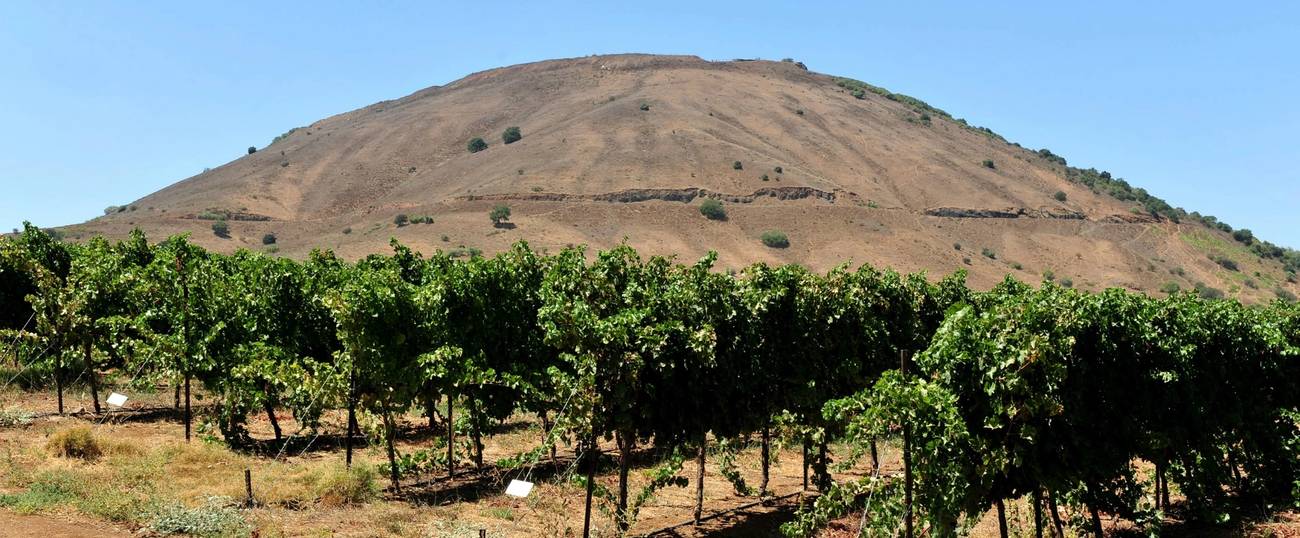Time for Israeli Winemakers to Embrace Their Viticultural Heritage
Down with cabernet and merlot, up with jandali and dabouki




Israelis are fiercely proud of their history and culture, which makes the current wine industry there all the more odd.
Yes, there is a trend towards higher quality wines, and many new vineyards. But why has a region that began making wine more than 5,000 years ago—long before the French—mostly ignored its own native grape varieties?
Today, cabernet sauvignon is the most-planted variety in Israel, followed by a long (and typical) list of French and European grapes, few of which are really suited to the hot climate of the Levant. From large wineries to small garagistes, virtually everyone is trying to copy European wine styles.
Consider what a food parallel would look like: Imagine Israelis focusing on who makes the best baguettes and coq au vin instead of obsessing over hummus, shakshuka, and halvah.
How did this happen, and are there realistic options?
For decades, the industry standard Oxford Companion to Wine mistakenly said that winemaking essentially disappeared from the region after the Muslim conquests of 636 CE, and that there were no native wine grape varieties left—just table grapes. The editors of that great publication have recently corrected both errors.
In fact, Middle Eastern Christians and Jews were always allowed to make wine under Islamic rule. Aren Maeir, an Israeli archaeologist, wryly notes that assuming no one drank wine because of the Koran is a bit like suggesting that Christians always follow the Ten Commandments, or that no one drank during Prohibition.
Numerous historical records confirm that winemaking continued in the Holy Land throughout the Middle Ages, though certainly on a scale smaller than pre-Islamic times.
A 1697 book by English clergyman and Oxford University scholar Henry Maundrell described one coastal tribe that changed its religion to match every business opportunity: “With Christians they profess themselves Christians; With Turks they are good Mussulmans; With Jews they pass for Jews. … All that is certain concerning them is, that they make very much and good Wine, and are great Drinkers.”
Many Jews who fled Spain’s mass expulsion in 1492 or other Christian persecutions were welcomed by the Ottoman Empire as businessmen and court advisers. The northern Israeli city of Safed had a thriving Jewish community in the Middle Ages, and historian Uri Mayer-Chissick notes than a visitor in 1818 described five kinds of wine there, including some for the rich that was 15 to 20 years old.
But in the 1880s, the founding father of Israel’s modern wine industry had a cultural blind spot. Frenchman Edmond de Rothschild invested vast sums to expand Levant agriculture, and wine production in particular. Yet he ignored advisers who saw potential in native wine grapes, and instead began planting European varieties. For more than 100 years those decisions influenced the whole industry.
Then, around 2008, a few people noticed that Palestinian Christians at the Cremisan Monastery and winery, located between Jerusalem and Bethlehem, were using strange-sounding local grapes: jandali, hamdani, and dabouki. A few years later Israeli scientist Shivi Drori launched a comprehensive search for native wine grapes, with support from the Jewish National Fund.
Drori found about 20 varieties with winemaking potential, including the ones Cremisan uses. DNA analysis confirmed that some of the local Israeli grapes are older than the famous French varieties, and perhaps linked to grapes from the Caucasus Mountains, where winemaking began roughly 8,000 years ago.
The native grapes can make quality wine, too. Experts such as renowned British critic Jancis Robinson and New York Times critic Eric Asimov have praised Cremisan’s white wines, and Drori has found other red grape varieties with potential.
There are other intriguing possibilities, too. Israeli wineries have almost completely ignored another grand historical tradition: using clay amphorae. Every few years newspaper stories speculate on what wine Jesus or King David might have tasted, without noting that barrels are a relatively recent trend. Ancient wine was made in amphorae, and people in the Republic of Georgia still use similar vessels. Small producers in Italy, France, and even America also make beautiful wines in clay.
So Levant winemakers have options to embrace their own viticultural heritage, and the famous Israeli chef and author Yotam Ottolenghi told me they should. “Well, of course, native grapes are extremely important to preserve because they ensure that we keep enjoying varieties that evolved over millennia. Streamlining the production of all crops has been gradually robbing us of diversity of flavour and homogenized our eating and drinking experiences,” Ottolenghi wrote in an email.
Over the last few years, Israeli winemaker Ido Lewinsohn and a few others have embraced Drori’s research and the native grapes, and hopefully more will. Greece, Georgia, Armenia, and Italy have found success by promoting their own grapes, and of course Israeli wine lovers don’t need to completely reject the famous varieties. But endlessly trying to copy great French and Italian wines is a cultural and perhaps even financial muddle. If the Levant embraces its own wine grape heritage, locals and tourists are sure to follow.
Kevin Begos is the author of Tasting the Past: The Science of Flavor and the Search for the Origins of Wine (Algonquin Books).